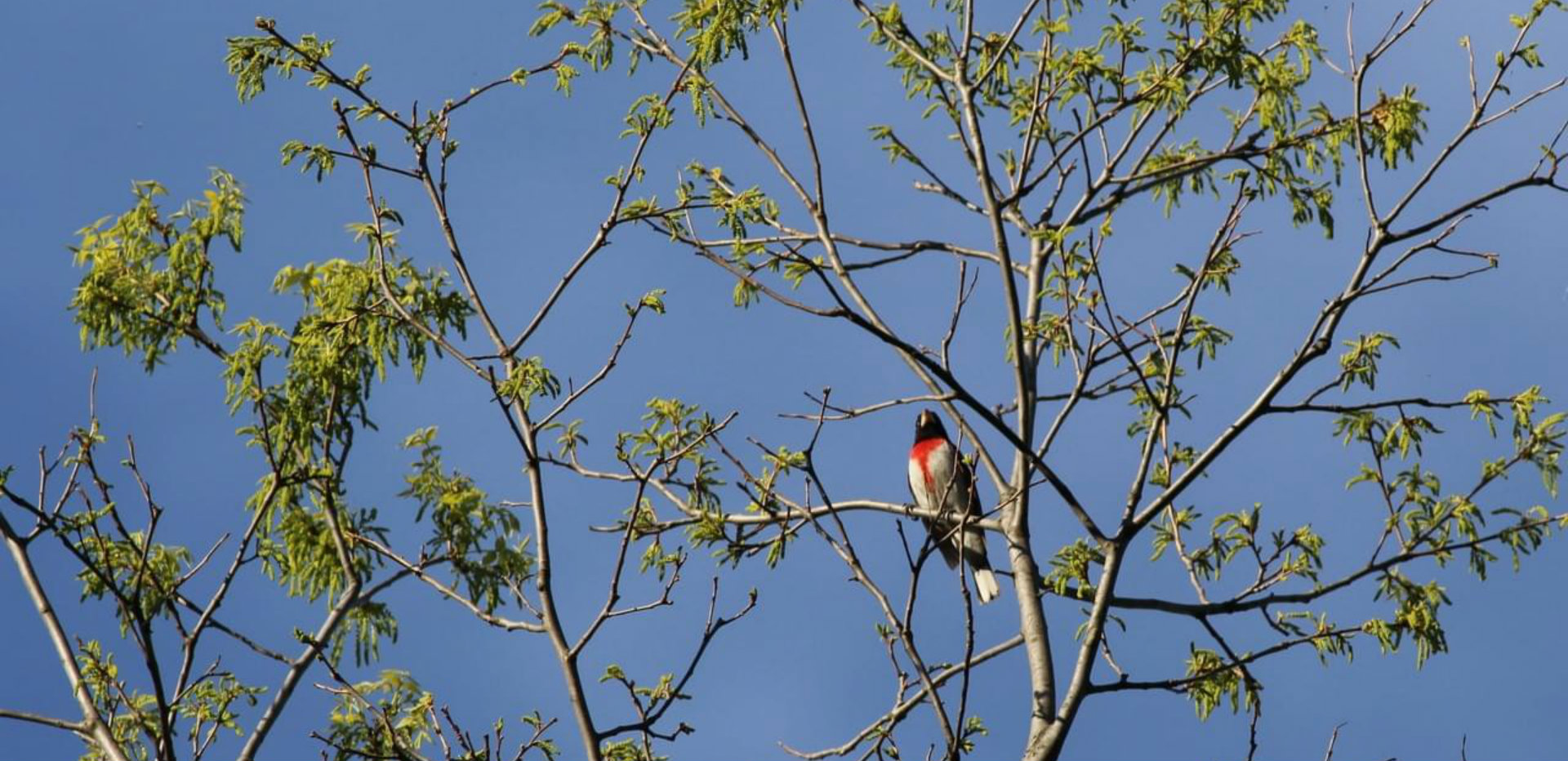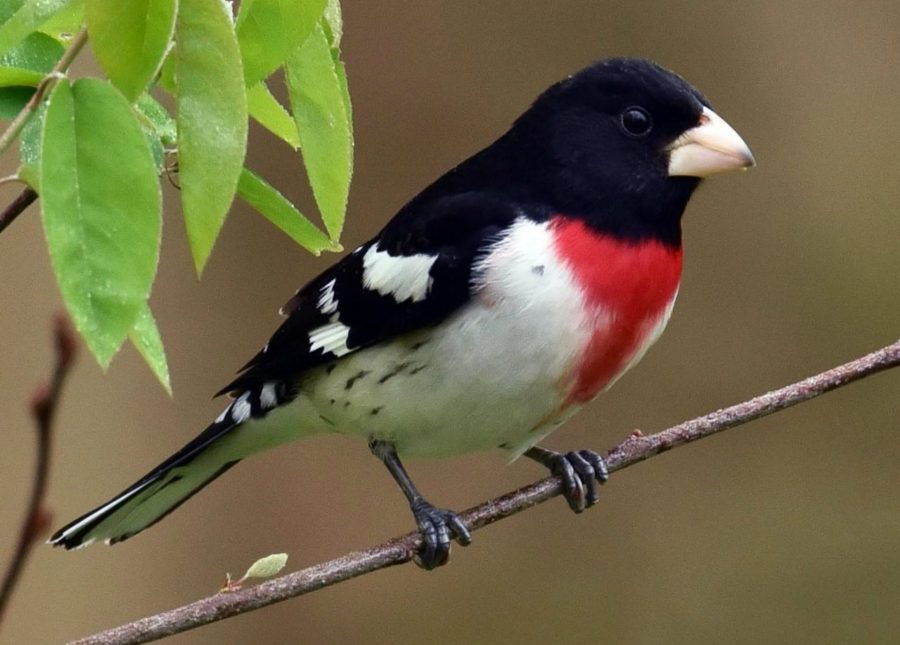
ROSE-BREASTED GROSBEAK
This species is quite common during spring and fall migration and some individuals breed in Essex County. They are often seen around bird feeders, especially ones serving up sunflower seeds. Just about any woodlot in the county will have this species during spring migration. The feeders at Ojibway Park are a great place to have close-up looks in May.
Bursting with black, white, and rose-red, male Rose-breasted Grosbeaks are like an exclamation mark at your bird feeder or in your binoculars. Females and immatures are streaked brown and white with a bold face pattern and enormous bill. Look for these birds in forest edges and woodlands. Listen, too, for their distinctive voices. They sound like American Robins, but listen for an extra sweetness, as if the bird had operatic training; they also make a sharp chink like the squeak of a sneaker.
Size & Shape
Rose-breasted Grosbeaks are stocky, medium-sized songbirds with very large triangular bills. They are broad-chested, with a short neck and a medium-length, squared tail.
Color Pattern
Adult males are black-and-white birds with a brilliant red chevron extending from the black throat down the middle of the breast. Females and immatures are brown and heavily streaked, with a bold whitish stripe over the eye. Males flash pink-red under the wings; females flash yellowish. Both sexes show white patches in the wings and tail.
Behaviour
These chunky birds use their stout bills to eat seeds, fruit, and insects. They are also frequent visitors to backyard bird feeders, where they eat sunflower seeds with abandon. The sweet, rambling song of a male Rose-breasted Grosbeak is a familiar voice of eastern forests; their sharp “chink” calls are also very distinctive.
Habitat
Rose-breasted Grosbeaks breed in eastern forests; you can find them among both deciduous trees and conifers. They are most common in regenerating woodlands and often concentrate along forest edges and in parks. During migration, Rose-breasted Grosbeaks frequent fruiting trees to help fuel their flights to Central and South America.
*Image and description were sourced from: allaboutbirds.org

